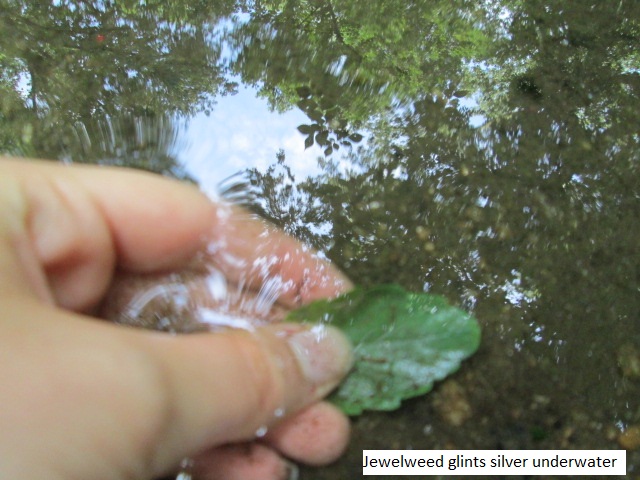Nitrogen Cycle: done by bacteria and used by plants
In the nitrogen cycle, many living things or
organisms transform nitrogen gas from the air into forms that can be
used by plants. Nitrogen in its usable forms are essential for plants to
stay healthy, because it is a critical component of parts of the cells
of plants, including proteins like enzymes and chlorophyll, which tell cells to 'breathe', make
energy, regulate themselves, reproduce, and grow. Certain groups of
bacteria in the soil in the roots of plants take the nitrogen from the
air and change it into the organic or living form ammonia (NH3),
later releasing it in its inorganic or nonliving form ammonium (NH4+),
which is one of the forms that plants can use. Other bacteria then takes
any leftover ammonium and changes it into nitrite (N02-),
followed by a third type of bacteria called heterotrophic bacteria that
transform it into nitrate (NO3-), the other form
that plants can use. This process is called nitrogen fixation (Ophardt,
C. 2003; Brencas-Moreno, 2009; Carey, Cirelli, Laria, McCormack, (2012).
Water’s effect on the nitrogen cycle
It’s been established that water levels have an effect on the amount of bacteria and nitrogen. Previous studies ESSRE studies (Rogers, Torres, Campochiaro & Sick, 2002; Adoga, Dinger, Searles & Thomas, 2011) have shown an overload of both in low, marshy areas. These places which have more bacteria and nitrate nitrogen, and a greater rate of nitrogen fixation than drier places Even in the places where water was deliberately added to dry soil, there tended to be bacteria and nitrogen levels closer to the naturally wet places. In wetter areas, you should expect both more nitrogen and more bacteria.
Plants need nitrogen
All
plants need nitrogen to survive, but some types of plants need more
nitrogen than others. For example, the grass family needs large amounts
of nitrate to grow and be healthy. In fact, nitrogen is called a
macronutrient and makes up 3-6 percent of a grass’s mineral composition,
proving that “it is present in larger percentages than other chemicals”
(Voigt, Fermanian, & Wehner, 1998). In addition to perennial grasses
that come back year after year, many annual plants, meaning plants that
do not survive the winter but instead reseed and grow new plants, are
also among those who require large amounts of nitrogen to survive.
Often, nitrogen fertilizers are used on grass lawns and annual gardens
for this reason (Carl, Reeder, Whiting, Wilson, 2011).
The mystery: Could it be certain plants messing with the nitrogen cycle?
After performing several tests and surveys in ESSRE Site 4 (with the coordinates N 39.35733; W 076.63840), we found that the site was ruled by white grass, and a type of annual plant called orange jewelweed. Approximately, white grass made up 43% and orange jewelweed made up 35% of the site’s plant life. In addition, it was determined that the soil in Site 4 contained the most cluttered population of bacteria in comparison to other sites in the ESSRE program. Because of this high number of bacteria (633,000 in one tiny cc unit of soil!), it would be expected that there would be a higher amount of nitrate in the soil as well, since all those bacteria would be converting the nitrogen down the nitrogen cycle into this final form. However, this was not the case, as Site 4 actually contained the least amount of nitrate (6.96 ppm, or parts per million) compared to each of the other sites. Although puzzling, we believed this mystery was caused by the huge presence of white grass and orange jewelweed, two plants that do not appear in any of the other sites. As mentioned, grasses and annual plants are known to take in large amounts of nitrogen to stay healthy. Therefore, we hypothesized that, despite the greater number of bacteria, the lack of nitrogen in the soil of Site 4 was due to the large population of white grass and orange jewelweed.